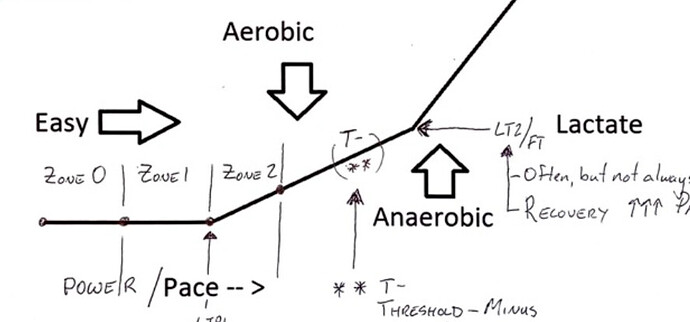I don’t usually work with Coggan zones or any zone that is estimated through submaximal values such as FTP, San Millán once said that Coggan zones are zones that have nothing to do with metabolism. I usually work with “metabolic” zones, i.e. based on thresholds, vo2max and for the glycolytic part the MMPs of a power profile test.
In intervals I can customize the pulse zones but I can’t customize the watts, it would be interesting to be able to refine the zones and really see the real internal load that a session involves for an athlete to be able to establish some customized zones with watts and not with percentages, so we could customize much more the training and if possible increase the number of zones as it has training peaks, that would be the idea for intervals, I think it would be an advance for coaches who customize a lot the zones depending on the metabolism of the athlete.
I’m also often struggling with the zones and updating them: aligning those percentages.
I don’t use the typical Coggan / ftp-based zones.
I measure lactate often (mostly the lower end) and I build my zones around physiological changes.
Like in the picture below:
Hi, I’m glad there are more trainers using this kind of zones in reference to the athlete’s metabolism, it would be a good idea if we could use these more “real” zones in intervals.
You can make the power zones whatever you like. They are captured as % of FTP (or CP if you capture that instead of FTP) so you just have o convert your watts values into %.
The zones are related to physiological milestones, first threshold, second threshold, vo2max, mmp p3, mmp p30s, etc.
Hi David,
My problem is I use Inscyd and the zones made from there. So I have zones that overlaps, is it possible to do that.
Unfortunately Intervals.icu doesn’t support overlapping zones (except for sweet spot).
Would an additional chart be better, for Lactate zones?
Out of curiosity (i’m thinking of getting a Lactate meter), how closely does heart rate track lactate? i.e. at 2.0mmol your heart is always X-bpm, and at 3mmol your heart is always at Y-bpm?
Is it always within a few bpm or does it vary a lot depending on the day?
Thanks
Lactate is a physiological marker in the body. Power and HR will most likely change each time you do it.
Also, you will be close to your tested values, but not exact. HR changes depending on a number of factors, eg. temperature, caffeine, emotions, fueling before and fueling levels during the workout, etc.
I’m trying to find the notes on FastTalkLabs as they mentioned this in much better detail than my explanation.
